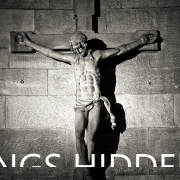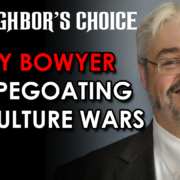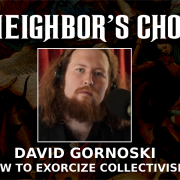Oedipus, The Romanovs, And The Individual In The Pandemic
In monarchy… it is a matter of the victim being still alive, one that has not yet been sacrificed. In the case of divinity, by contrast, the interpretation accentuates a victim that has already been sacrificed and it is a matter of the sacred having been already expelled from the community. In the former example, the power of the sacred will be above all present, alive and active in the person of the king; in the latter it will be absent, in the ‘person’ of the god.
~René Girard, ‘Things Hidden Since the Foundation of the World’
In his numerous works, René Girard makes the startling claim that the ancient phenomenon of ritual human sacrifice has often served as the origin and sustenance of civilization. These acts of human sacrifice were often disguised by what we know today as myths. One example of this recurring myth is Sophocles’ story of Oedipus Rex—the Theban king who became a hero by outwitting the Sphinx but was later found guilty of incest and patricide, thus becoming a tyrant in front of the accusers.
According to this myth, Apollo strikes the city of Thebes with a plague, and Oedipus, due to his sinful acts, is identified as the source of the plague and, therefore, must be expelled. The story emboldens the persecuting crowd. How do we know this? There are obvious clues as Girard himself has hinted, “Some commit incest and some commit patricide, but incest and patricide at the same time?” Indeed, the claims appear highly exaggerated; they were designed to indict a king.
Contrast the Oedipus myth with the Gospel texts. The accusatory spirit rages from the crowd who demand that Christ be crucified. “He casts out demons with the prince of demons,” flies from the accusers. But the texts reveal that Christ is innocent, and this revelation comes from the chief sentencer himself. “I find no guilt in this man,” says Pontius Pilate. Nevertheless, Pilate bows to the crowd’s demands from fear of a mass uprising.
Violence is like a contagion. It spreads, much like anything else, through imitation. But unlike other desires, the thirst for violence must be quenched. This is done by directing the violence to a single victim—one who is identified as the ‘source’ of the plague. The phenomenon was repeated throughout centuries so that societies do not perish in the apocalyptic wars that may result from violent contagion.
With the Gospel revelation, we come to know the lie behind mythical texts. Christ’s crucifixion reveals that human sacrifice is always based on a lie that stems from the accusatory spirit of the crowd. In light of this revelation, violence is unable to sustain society any more. The mythological texts are broken and it cannot be fixed. Satan, which means ‘accuser,’ in the modern world attempts to subvert this revelation so that scapegoating and human sacrifice is prolonged. Satan does this by masquerading scapegoating as a radical concern for victims.
Enter the twentieth century. Marxism is born and it has taken Russian society by storm. The ruling Tsar, Nicholas II, and his family are imprisoned by revolutionaries. They say that the Tsar has been a tyrannical ruler—one who has sucked the blood out of the proletariat—and must be completely deposed, therefore they move the Tsar and his family to a place called Ekaterinburg; there they imprison him in a ‘house of special purpose’—the sacrificial altar of the Bolsheviks. Meanwhile, the entire nation is in unrest. The ‘plague’ this time is, quite literally, violent contagion.
Had the Oedipus Rex mythology prevailed, the Tsar would have truly been the man he was said to be, ruthless and coldhearted. But in reality, as the revolutionaries who were guarding him soon found out, he was instead a simple-minded person who had resigned himself to his fate. Now keep in mind that Nicholas II was not a totally innocent man; he allowed his country to be ravaged by the war machine of his time which caused the death of millions of innocent lives. Nevertheless, despite being subjected to numerous humiliations, such as constant searches and confiscation of their properties, and physical ailments, especially the young hemophiliac tsarevich Alexei, the Romanov family displayed remarkable faith and dedication to each other.
The Romanovs’ Christ-like behavior, however, did not stop the communist regime from massacring them. But the slaying drew widespread condemnation from western and other Calvary-haunted nations. It was the first step that would hasten the decline of the totalitarian Communist state. The empire of lies fell with the laying of the first cornerstone. Let us step back and observe this from an anthropological perspective. When Christ suffered and died on the cross he proclaimed the victim of violent persecution innocent, and in doing so, elevated the status of the individual person. Indeed, Christ proclaimed the person as God’s image-bearer and worthy to be treated with dignity and fairness.
A new command I give you: Love one another. As I have loved you, so you must love one another.
~John 13:34
In elevating personhood, the status of the king was desacralized. The king was freed from his status as a sacrificial offering in waiting, humanized, and revealed to be just like anyone else. This contagion of desacralization that emanated from Jesus’ crucifixion has steadily worked its way through history and has now come to a point where every human being is considered sovereign and worthy of life. The apostle Paul even went as far as to say the following:
Now if we are children, then we are heirs—heirs of God and co-heirs with Christ, if indeed we share in his sufferings in order that we may also share in his glory.
~Romans 8:17
Jesus knew that humans are an imitative species, and he also knew that evil stems from violence, and violence from the imitation of bad role models or ‘negative mimesis’ as Girard would call it. Jesus flipped the tables and used the mimetic nature of human beings to destroy Satan’s contagion; he used ‘positive mimesis’ wherein human beings now have Christ as the ultimate model for peace and prosperity.
Satan knows that his game is up. Now he acts in desperation to get humanity to cling to the scapegoating machine at any cost. Jesus’ elevation of personhood means that Satan has now widened the crosshairs of human sacrifice. Just as the Romanovs were imprisoned by the Communists, today our institutions imprison us whilst claiming to protect us from the ‘plague’—the pandemic. Just as the ‘house of special purpose’ was surrounded by armed guards and machine-gun nests, the institutions of violence impose lockdowns and use law enforcement and courts as tools to assault and imprison those who would break the lockdown rules. Acting in tandem with the accusatory spirit, the promoters of violent institutions would make Oedipuses out of those who would not comply—they would level accusations and shame us so that we would blind ourselves.
But Satan’s game is a losing game and it is slowly fading away. Because of the Gospel revelation, we can see violence as clear as day and human sacrifice as clear as the sun. Jesus’ contagion of non-violence has settled firmly in our collective subconsciousness, and now we have come to a point where even the hardest of atheists agree that the person of Christ is worth emulating to preserve society.
Our survival as God’s unique creation depends on emulating Jesus just as the Romanovs did in their days of captivity. The master of the cosmos beckons us with his resurrection to spread the contagion of non-violence so that his victory over death is complete. Our imitation of Jesus and the resulting fruit of virtue through voluntary interaction will hasten the demise of coercive institutions and their tools of war, extortion, abortion, censorship, and mass incarceration. It is time for us to reflect on the powerful implication of Jesus’ words: “The truth will set you free.”











